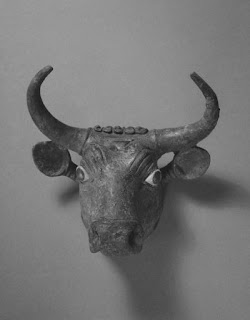The Latin alphabet that today we use to give meaning and order to letters mostly in the Western world and also a large part of the Eastern world with the annexation of English as an international language, has Phoenician origins, that is, one of the nomadic peoples The oldest in the world was in charge of expanding it through various maritime incursions, it turns out that the writing was deformed to be more practical for daily use, migrations, large movements of people and ancient trade forced to create a more flexible and alternative alternative. easy to use for anyone who was a foreigner, the ancient or inclusive hieroglyphic system the cuneiform, was adapted to the different cultures that knew how to use it and modify it according to its roots, and then make it official as a language. In this post we are going to talk a little about the deformation that the first Phoenicians who came from the Atlantic to populate different parts of the Mediterranean gave it.

The ALEP was the first letter of the (AL PHA BE) Hebrew alphabet. And in turn, the most important one comes from the letter ALPHA FENIXIA, the term ALEF means precisely Ox / Bull and is represented with said head and two horns.
Phoenix Philology Similar to the Viking Runes found in the Nordic countries
This could be explained because the letter A. Represents their ancestral origins, they the creators of this alpha-beto come from the constellation of the bull more precisely from its brightest star
called Aldebaran that is easily seen from the ground, and this singular letter is a diagram of the figure of a bull since it is inverted, it forms a symbol with two extremities that would be those of the horns of aldebaran (al deba-al aran * ).
The Phoenician Remains are found mainly in Lebanon, in very important cities such as Sidón, Tyro, Beirut (bereiut), but there are also in Spain, to the south in the Iberian Peninsula, more precisely in places like Andalusia, Cadiz, Galicia, Alcacer , Malaga, Toledo and in countries such as Lisbon, Cyprus, Malta, Greece, Macedonia, Island of Crete, Sardinia The Netherlands, part of Norway, Tartary and the Islands of Great Britain, the latter being named after the honor of Goddess Tanit who She was known to the Phoenicians as Astarte, '' Great Bere-Tanit '' great goddess Tanit. today known as the mother goddess Britain.
In the Basque Country you can find thousands of stelae like these, which tell the history of its culture and its past, some with millenary symbols such as the Lauburu or the Flor de liz, the bull or the detail of the pine cones, the Anunnaki symbol for excellence, but the impressive thing is that it can be determined that archaic Basque is much older than Latin and that in reality the Basque culture was the pioneer in creating the Spanish Castilian writing system.
The name refers to its origins mother bere-mother beirut or bereut. / One of the first Phoenician settlements installed in the Middle East.
In conjunction and in short, giving a common origin to all these countries and civilizations, since their ancestors were Phoenicians and they came through the doors of the Mediterranean, either escaping from ancient wars or looking for uninhabited lands for a new beginning to prosper and take care of this culture that offered us as much as an alphabet based on a cosmic language used to distinguish a place of origin, the letters are the mark of a millennial past that the gods left us in ancient times, it is the identity of a race brought to earth , to be able to understand and communicate or differentiate one cultures in order to preserve them from others.
The famous emerald tablet is a clear example of this ancient writing, no one knows exactly where it came from or who made it, but it is associated with Egypt since it is rumored that it was found in Egypt, that is why many relate it directly to the god Toth the scribe who would have acquired it from Atlantis to translate it, although there is no proof of this, possibly the true origin of this table is Phoenician, since in linguistic comparison it is the most similar to the alphabet of this culture, since in she according to investigations of the physicist isaac newton are the principles of hermes trimegistro. The cradle of hermeticism, whose same would give the esoteric explanation of the phenomena and basic principles of life on earth, something that could have been consecrated in Atlantis and written by the Annunakis, which would give another indication that the language used by the Phoenicians born in Atlantis.
The writing called protosinaitica in antiquity, has been a way to figure and express ideas through the art of representation in an esoteric way an improved example of this happened in Egypt with the hieroglyphic writing, which together worked with the language- of nomadic languages such as Phoenician, thus forming al-pha / be-re - tho pha de pharaon be de beretanit. What is the crossing of these two convergent branches of writing that was harvested on earth, possibly at their common point of connection between these cultures, which is the Mediterranean and beyond, the Anatolian peninsula. The parents of whose civilizations managed to amalgamate the two rivers of knowledge, placing it in a simple linguistic expression, understanding that the al-pa beings were the mater of creation and the be-tas beings were the ones who reduced this by forming the alpa beto.








No hay comentarios.:
Publicar un comentario